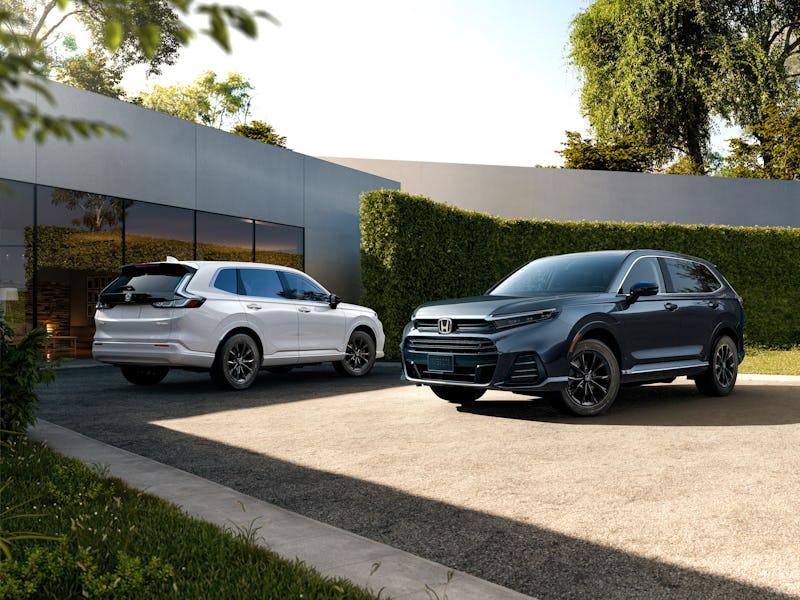Honda’s New Hydrogen SUV is a Big Bet on the Future of EVs
Especially since refueling stations aren't widespread yet.

Honda may be falling behind other legacy automakers with battery-powered EVs, but it’s instead hoping to gain some early ground with hydrogen fuel cell-powered alternatives. To achieve that, Honda will introduce a 2025 model of the CR-V e:FCEV to the U.S.
The name may seem like alphabet soup but it does explain exactly what the upcoming CR-V model is and when spelled out, it’s clear that it’s an all-electric fuel-cell-powered EV.
It’s not the first time Honda has dabbled in hydrogen-powered EVs, since it released the little-known FCX back in late 2002, but that was during a time when EVs were far less popular. Now that the times have changed, Honda is hoping to invest early into this alternative EV design.
You can refuel the CR-V e:FCEV either by topping off your hydrogen tanks in the back or charging the battery in the front.
Two Clean Sources of Power
The CR-V e:FCEV features a Fuel Cell system that was made in collaboration with GM. This system means the all-electric SUV gets an EPA-estimated 270-mile range before you have to refuel, but it can also run solely off the battery component for up to 29 miles. The CR-V isn’t known for its performance, but the e:FCEV model will still pump out 174 horsepower and 229 lb-ft of torque thanks to its single motor that’s at the front of the EV.
Inside the cabin, the driver gets a 10.2-inch digital instrument panel, while a nine-inch HD touchscreen sits at the center. You can wirelessly charge your phone, which can be paired to the CR-V e:FCEV either with Apple CarPlay or Android Auto. To better suit the driving conditions, the EV lets you choose four driving modes: normal, eco, sport, or snow.
On the outside, Honda added vertical lights that connect the tail lights to the rear spoiler to differentiate the e:FCEV model from its CR-V siblings. Like a handful of EVs out there, the CR-V e:FCEV can charge up your devices thanks to a 110V power outlet. You’ll be able to run small appliances, portable ACs, power tools, camping equipment, and any other compatible device.
You might have a hard time refueling your CR-V e:FCEV outside of California.
Launching in California
Honda says it will build the CR-V e:FCEV at its Ohio manufacturing facility, making it the only fuel cell electric passenger vehicle made in America. That should also allow Honda’s upcoming EV to qualify for the federal tax credits.
The automaker hasn’t revealed pricing details yet, but we’re hoping that this upcoming EV upholds Honda’s reputation for reliable cars at affordable price points. However, even if the CR-V e:FCEV comes in at a solid starting price, it might still be a hard sell for U.S. customers. Currently, there are only 58 hydrogen fueling stations between the U.S. and Canada, with an overwhelming majority of them located in California. Honda does seem to be aware of this since it’s starting leasing for the 2025 model of the CR-V e:FCEV in California later this year.